15 years one-stop China custom CNC machining parts factory
 128 |
Published by VMT at Apr 28 2025 | Reading Time:About 6 minutes
128 |
Published by VMT at Apr 28 2025 | Reading Time:About 6 minutes
Have you ever struggled with choosing the right metal forming method for precision parts? Traditional metalworking often leads to inconsistent results, wasted materials, and higher costs. Metal stamping offers a fast, highly repeatable, and cost-effective solution — but without a deep understanding of the process, it’s easy to miss its full advantages. At VMT, we specialize in combining metal stamping with metal CNC machining to deliver custom, high-precision parts. In this article, you’ll discover how metal stamping works, its benefits, limitations, and how CNC machining factories like VMT use this technology to create exceptional products.
Metal stamping is a manufacturing process where flat metal sheets are fed into a stamping press and formed into specific shapes using dies and pressure. It is widely used for producing high-volume, high-precision parts quickly and cost-effectively.
Now that you have a basic idea of what metal stamping is, let's dive deeper into how the metal stamping process works step-by-step, from tool preparation to final finishing, and why it remains a cornerstone technology for industries ranging from automotive to electronics.
Metal stamping is a cold-forming technique that transforms flat metal sheets into desired shapes using dies and mechanical force. Unlike cutting or subtractive methods, stamping manipulates material through compression and deformation, offering high efficiency and minimal waste. It is often combined with metal CNC machining when even tighter tolerances are required, providing a hybrid approach that optimizes both cost and precision.
The core of the stamping process involves feeding a flat metal strip or sheet into a stamping press where a tool and die surface forms the metal into a net shape. Whether producing simple washers or complex automotive panels, stamping enables mass production with remarkable consistency. Thanks to automation and intelligent die designs, modern stamping CNC machining parts can achieve incredible accuracy, fulfilling the tightest production requirements demanded by industries today.
How Metal Stamping Works
The metal stamping process typically begins with selecting the appropriate metal material — such as steel, copper, brass, or aluminum — followed by designing precise dies to create the desired shape. Once the design is complete, the metal is inserted into a high-tonnage press where it undergoes operations like blanking, punching, bending, and coining. Each operation manipulates the material without removing any, maintaining its strength while achieving the required geometry.
Many CNC machining factories integrate CNC machining services with stamping to refine complex features, tight tolerances, or intricate details that pure stamping processes may not achieve. This hybrid approach allows companies like VMT to deliver metal stamping CNC machining parts that meet the most demanding specifications across industries like automotive, aerospace, and medical device manufacturing.
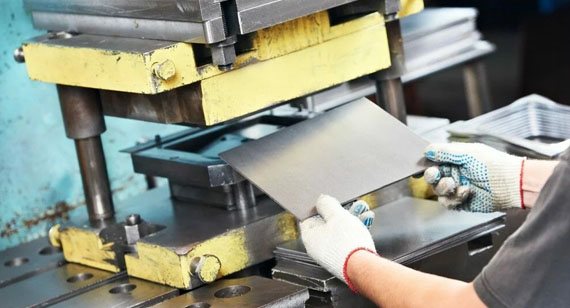
Creating metal stamping parts is a multi-step process that requires careful planning, precision tooling, and accurate execution. Each phase — from the initial design to final post-processing — plays a crucial role in determining the quality, performance, and cost-effectiveness of the finished product. At VMT, we blend metal CNC machining and CNC machining services with advanced stamping techniques to meet the complex demands of modern industries. Let's walk through each step of the metal stamping part production process to better understand how raw metal transforms into high-precision components.
Design and Tool Preparation
The first and arguably the most critical step in metal stamping is designing the part and preparing the tooling. Engineers begin by drafting detailed CAD models that outline the part’s dimensions, tolerances, and critical features. Based on these specifications, custom dies and punches are manufactured, typically using hardened tool steel for durability.
Proper die design is crucial — it must account for material flow, strain distribution, and potential deformation to ensure the finished part meets specifications. In some cases, metal CNC machining is used to precisely cut or finish the dies, enhancing accuracy and tool life. At VMT, our expert team meticulously plans every design to guarantee superior results in stamping CNC machining parts production.
Material Preparation
Once the dies are ready, selecting and preparing the right material is the next step. Common materials used in metal stamping include steel, stainless steel, copper, brass, and aluminum, each offering unique advantages for different applications. Sheets or coils are inspected for thickness, surface condition, and mechanical properties to prevent defects during production.
In CNC machining factories like VMT, strict material standards are enforced, and traceability is maintained throughout the entire supply chain. This ensures that each batch of metal stamping CNC machining parts starts with quality-certified materials, which is essential for maintaining performance and consistency.
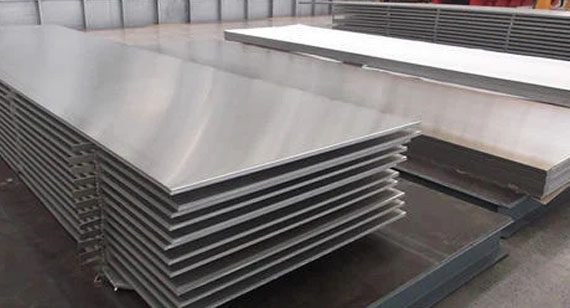
Feeding
Material feeding refers to introducing the metal sheet or strip into the stamping press. Automated feeders are often used in high-volume productions, ensuring continuous and precise material movement through the press. Proper feeding minimizes misalignment, wastage, and downtime.
High-end feeders can adjust for thickness variations and control tension, which is critical when combining metal stamping with CNC machining services for high-precision applications. Inconsistent feeding can cause off-tolerances that even secondary machining cannot always correct, so precision at this stage is non-negotiable.
Stamping Operations
With the material correctly fed, the actual metal stamping operations begin. Depending on the part design, multiple actions — such as blanking, punching, bending, coining, drawing, or embossing — may be performed in a single or progressive die setup. For complex components, several stamping stages may be required, each incrementally shaping the material closer to its final form.
At VMT, we specialize in integrating stamping with CNC machining services to add intricate geometries or tight-tolerance features after the primary forming process. This combination ensures that even highly complex metal CNC machining parts maintain exceptional quality and precision.
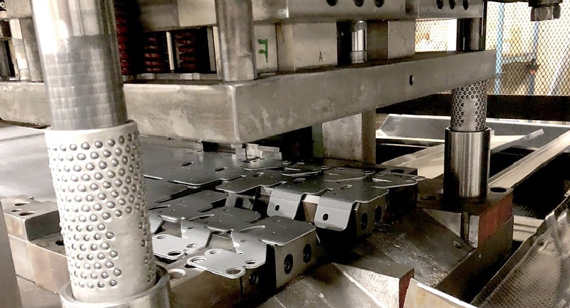
Finishing and Post-Processing
After stamping, parts often require additional finishing operations to meet surface quality, dimensional, or functional requirements. Common post-processing steps include deburring, heat treatment, surface coating, and precision machining. Especially in sectors like automotive and medical, achieving burr-free edges, precise dimensions, and flawless finishes is critical.
By leveraging our CNC machining services, VMT can seamlessly handle secondary operations, ensuring that the final metal stamping CNC machining parts meet or exceed customer expectations. This comprehensive approach reduces lead times, improves quality control, and provides customers with fully finished, ready-to-assemble parts.
Metal stamping has become one of the most preferred manufacturing methods across industries, thanks to its ability to produce high-quality parts at scale. Whether you're making components for automotive, electronics, medical devices, or aerospace, the advantages of metal stamping are hard to ignore. When combined with metal CNC machining and CNC machining services, metal stamping delivers unmatched efficiency, precision, and cost-effectiveness for both prototype and mass production needs. Let's explore the key advantages that make this process so valuable.
High Production Speed
One of the biggest benefits of metal stamping is its incredible production speed. Once the tooling is set up, the stamping press can produce thousands of parts per hour with minimal manual intervention. Progressive dies and automated feeding systems further enhance efficiency, enabling continuous production lines. This rapid output makes metal stamping CNC machining parts ideal for industries requiring large volumes without sacrificing quality.
Consistent Precision and Accuracy
Thanks to advanced die designs and tight process controls, metal stamping consistently produces parts with high dimensional accuracy. At VMT, we combine stamping CNC machining parts production with precision CNC machining services when tighter tolerances are needed. This hybrid approach ensures that each part maintains excellent repeatability — critical for industries like automotive and medical, where failure is not an option.
Cost Efficiency at Scale
When producing large quantities, metal stamping becomes extremely cost-effective. Although initial tooling costs may be significant, the per-part cost drops dramatically once production scales. Compared to other forming or machining methods, stamping offers an excellent return on investment for high-volume projects. By partnering with expert CNC machining factories like VMT, customers can further optimize their production costs while maintaining premium quality.
Versatility in Design
Metal stamping is highly adaptable and capable of creating a wide range of part geometries, from simple flat blanks to intricate three-dimensional shapes. Operations like bending, embossing, coining, and deep drawing can all be integrated into the stamping process. Plus, by combining metal CNC machining into post-processing, manufacturers can achieve even more complex designs, such as threaded features, fine holes, or critical surface finishes.
Material Efficiency and Waste Reduction
Modern metal stamping techniques are designed to maximize material usage. Strip layouts are carefully planned to minimize scrap, and advanced die designs ensure efficient blanking and forming operations. Additionally, leftover materials can often be recycled, further improving sustainability. For companies focusing on eco-friendly production, VMT’s metal CNC machining and metal stamping solutions align perfectly with green manufacturing goals.
While metal stamping offers many impressive advantages, it’s important to recognize its limitations as well. Understanding the challenges involved helps manufacturers make informed decisions, especially when balancing production costs, material choices, and part complexity. When carefully evaluated, these disadvantages can be managed — especially when combining metal stamping with precision metal CNC machining from trusted CNC machining factories like VMT.
High Initial Tooling Costs
One of the main drawbacks of metal stamping is the substantial upfront investment in tooling. Designing and manufacturing custom dies requires specialized skills, expensive materials, and time. For small production runs, these tooling costs can outweigh the benefits, making other methods like metal CNC machining or stamping CNC machining parts more suitable for prototypes and low-volume orders. However, for large runs, these costs are quickly amortized.
Limited Design Changes
Once the dies are manufactured, making any design changes becomes difficult and costly. Even a small adjustment might require redesigning the die or creating a completely new one. This inflexibility can be a major drawback in fast-evolving industries where product designs often need frequent updates. In contrast, metal CNC machining offers more flexibility for engineering changes without the need for complete retooling.
Thickness and Material Constraints
Metal stamping is most effective with certain materials and within specific thickness ranges. Very thick or hard metals might cause excessive die wear or even damage, while very thin materials could lead to wrinkling or tearing. In cases where material properties limit traditional stamping processes, combining metal stamping CNC machining parts with additional CNC machining services can ensure both strength and precision.
Risk of Surface Defects
During the stamping process, parts are subjected to significant pressure and friction, which can sometimes result in surface defects such as scratches, burrs, or minor deformations. These imperfections might not be acceptable in industries like medical or aerospace manufacturing. To counteract this, secondary finishing processes — including metal CNC machining and surface treatments — are often used to enhance part quality and meet strict cosmetic or functional requirements.
Not Ideal for Highly Complex 3D Parts
Although metal stamping can create a wide variety of forms, extremely complex 3D geometries often require additional processing or alternative manufacturing methods. In such cases, CNC machining services offer more precise control over intricate details, allowing for complex features like internal channels, threads, or undercuts that stamping alone cannot achieve.
Choosing the right material is a critical step in the metal stamping process. The material you select impacts not only the manufacturing efficiency but also the quality, durability, and functionality of the final metal stamping CNC machining parts. Each metal behaves differently under the high pressure of stamping, so understanding your material options helps ensure the best possible outcome. At VMT, we provide expert guidance and CNC machining services to match materials perfectly to your project needs.
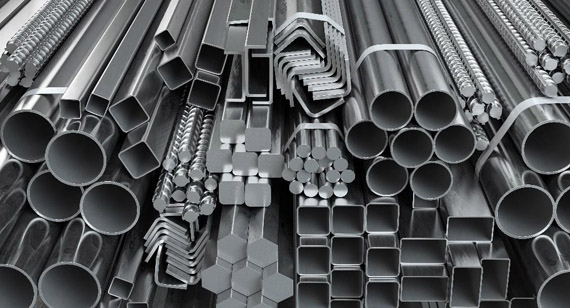
Steel
Steel is one of the most commonly used materials in metal stamping due to its strength, durability, and relatively low cost. It is available in various grades, including carbon steel, alloy steel, and galvanized steel, each offering different properties. Steel is ideal for parts that require toughness and long-lasting performance, such as automotive components and industrial hardware. When paired with metal CNC machining, steel parts can achieve even tighter tolerances and improved surface finishes.
Stainless Steel
For applications requiring excellent corrosion resistance and high strength, stainless steel is a top choice. Stainless steel is widely used in industries like medical, food processing, and aerospace where hygiene and durability are critical. However, its hardness can pose challenges during stamping, increasing tool wear. Combining metal stamping with metal CNC machining can refine stainless steel parts to exact specifications while maintaining their structural integrity.
Copper
Copper is prized for its exceptional electrical and thermal conductivity. It’s soft, ductile, and easy to form, making it perfect for electrical connectors, terminals, and heat exchangers. However, because of its softness, copper parts may require additional surface treatments or secondary operations. In these cases, stamping CNC machining parts undergo CNC machining services for fine detailing and enhanced precision.
Brass
Brass, an alloy of copper and zinc, offers a good balance between strength, corrosion resistance, and workability. It’s often used in decorative applications, plumbing fittings, and electronic components. Metal stamping brass is relatively easy, and its smooth surface finish makes it highly attractive for visible parts. When higher precision is needed, brass parts can be complemented with CNC machining processes to meet tighter design specifications.
Aluminum
Aluminum is lightweight, corrosion-resistant, and easy to form, making it an excellent choice for industries like automotive, aerospace, and consumer electronics. Its low density helps reduce overall product weight without sacrificing strength. Metal stamping aluminum requires careful control to avoid cracking, but when combined with metal CNC machining, manufacturers can achieve high-quality, intricate parts that are both strong and lightweight.
Others
Beyond the common materials, other metals like titanium, nickel alloys, and specialty steels are also used depending on the application. These materials often require special handling during metal stamping due to their unique properties. For these challenging projects, VMT’s expertise in CNC machining factories ensures that even the most complex and demanding materials are processed accurately and efficiently, combining stamping CNC machining parts with advanced secondary operations.
Metal stamping is a highly versatile process that adapts to a wide range of production needs. Depending on part complexity, volume, and material type, different stamping techniques are used to achieve optimal results. Each method offers unique advantages and is often integrated with metal CNC machining to further enhance precision. At VMT, we match the right CNC machining services with the appropriate stamping method to deliver the best outcomes for your project.
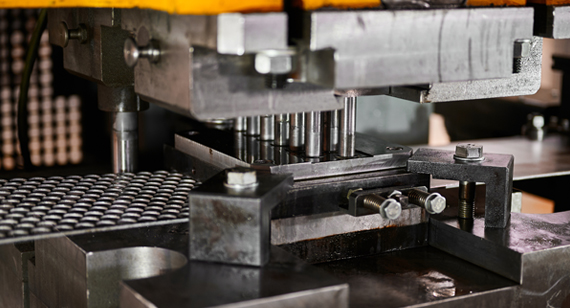
Progressive Die Stamping
Progressive die stamping is ideal for high-volume production where efficiency and speed are critical. In this process, a strip of metal moves through a series of stations within a single die. Each station performs a specific operation—such as punching, bending, or cutting—before the part is completed. Progressive stamping is highly automated and can produce complex stamping CNC machining parts quickly with consistent quality. It is especially effective for producing intricate parts with tight tolerances at a lower per-unit cost.
Transfer Printing
Transfer printing, or transfer die stamping, differs from progressive stamping by moving the part from station to station independently, rather than moving the entire metal strip. This method is suitable for larger parts or parts that require extensive forming. Transfer printing provides flexibility in forming operations and allows for more complex geometries. In applications where metal CNC machining is needed after stamping, transfer printing ensures parts retain their integrity through each step.
Four-Slide Stamping
Four-slide stamping uses four synchronized slides to manipulate the metal from four different directions. This process is perfect for creating parts that need multiple bends or complex forms. Four-slide machines are exceptionally fast and allow for the production of complex, small to medium-sized parts with minimal material waste. When tighter precision is needed, metal stamping CNC machining parts produced by four-slide stamping are refined through CNC machining services.
Deep Drawing
Deep drawing involves pulling a metal sheet into a die to form a deep, hollow shape, such as cans, kitchen sinks, or automotive fuel tanks. It is ideal for producing parts with a high depth-to-diameter ratio. Materials with high ductility like aluminum and stainless steel are commonly used. Deep drawn parts often benefit from metal CNC machining for final dimensioning and surface finishing to meet stringent application standards.
Fine Blanking
Fine blanking is a specialized process for creating highly precise parts with smooth edges and tight tolerances. Unlike traditional stamping, fine blanking uses higher pressure and triple-action tools to shear the metal cleanly. This method is used for automotive gears, transmission parts, and other critical components where performance and precision are essential. Fine blanked parts often integrate CNC machining for finishing or further detail work.
Deep Stamping
Deep stamping, similar to deep drawing, focuses on forming large and complex hollow parts. It is particularly effective for producing components requiring durability and strength, such as aerospace and automotive structural parts. Deep stamped parts are often supplemented by CNC machining services to enhance detail, maintain tolerances, and improve surface quality.
Hydraulic Forming
Hydraulic forming uses pressurized hydraulic fluid to shape metal sheets into complex forms. This method allows for deep and intricate designs that would be difficult or impossible with traditional stamping. Hydraulic forming is often used in aerospace and automotive industries for high-strength, lightweight parts. After forming, parts may go through metal CNC machining to achieve exact specifications.
Blanking
Blanking is one of the most basic metal stamping processes where a punch and die are used to cut out flat shapes from a sheet of metal. The resulting blanks can then be further processed or used as final parts. Blanking is often the first step before additional CNC machining services refine the part’s dimensions and surface characteristics.
Coining
Coining is a precision metal stamping process used to create fine details, embossed features, or high-density areas in a metal part. It involves high pressure that flows the metal into a precise shape without cutting. Coining is ideal for creating features like coins, badges, and specialized fasteners that require tight tolerances and a high-quality finish.
Punching
Punching involves cutting holes or shapes into a metal sheet using a punch and die. It's a fast and cost-effective method, perfect for parts with multiple perforations. After punching, parts often undergo CNC machining to clean up edges or add finer details if needed.
Embossing
Embossing raises or recesses parts of the metal surface to create designs, logos, or textured finishes. This process enhances the aesthetic and functional qualities of a part, especially in decorative applications. Metal stamping CNC machining parts that require both embossed features and precision fits often combine embossing with metal CNC machining for the best results.
Bending
Bending is a simple but essential metal stamping process where metal sheets are deformed into angles, U-shapes, V-shapes, or channels. It’s widely used across industries from construction to electronics. When exact angles or multiple bends are needed, bending is often combined with CNC machining services for precise results.
When planning a metal stamping project, understanding production volume needs is critical. The choice between small batch, medium batch, or large batch production affects not only cost but also lead time, tooling design, and the integration with metal CNC machining. At VMT, we help clients determine the best production strategy based on project requirements, ensuring efficient, high-quality output through our advanced CNC machining services.
Small Batch Production
Small batch metal stamping is ideal for prototypes, custom parts, or projects requiring fewer than a few thousand pieces. It allows companies to test designs, make adjustments, and save on initial tooling costs. In small batch production, flexibility is key—tools may be reconfigured, and design changes are easier to implement. Parts produced in small batches often undergo CNC machining for finishing operations to meet precise specifications, making it perfect for industries like medical devices, aerospace components, and specialty electronics.
Medium Batch Production
Medium batch production typically involves tens of thousands to hundreds of thousands of parts. This level balances production efficiency with customization capabilities. Tooling becomes more refined, and automation is commonly introduced to optimize speed and reduce per-part costs. Medium batch production benefits greatly from combining metal stamping and stamping CNC machining parts processing, ensuring both volume and precision. It’s an excellent solution for industries like automotive, consumer electronics, and industrial equipment.
Large Batch Production
Large batch production, often exceeding millions of units, is where metal stamping shines in terms of economy of scale. High-volume stamping requires precision tooling, automated feeding systems, and strict quality control processes. Large batches demand long-lasting dies made of hardened tool steel and are often complemented by inline CNC machining services for tasks like drilling, tapping, or secondary forming. VMT's capabilities in large batch production ensure that every piece maintains high consistency and tight tolerances, critical for sectors like automotive manufacturing and appliance production.
Short Run Stamping
Short run stamping falls between small and medium batches. It is a cost-effective option for producing limited quantities without the significant investment of high-volume tooling. Short run stamping uses simplified or modular dies and often relies heavily on secondary CNC machining operations to meet final part specifications. It’s a preferred choice for startups, R&D departments, and industries requiring rapid market testing or quick design changes.
Long Run Stamping
Long run stamping focuses on the continuous production of a large number of identical parts over a long period. It involves creating highly durable tooling that can withstand millions of cycles with minimal maintenance. Long run stamping offers excellent cost-per-unit savings but demands upfront investments in tooling and setup. Integration with CNC machining factories ensures that even high-volume parts can maintain exacting standards and precise features where necessary.
Across all production scales, achieving tight tolerances is often a necessity, particularly for industries like aerospace, medical, and electronics. Tight tolerances ensure that parts fit perfectly and perform reliably under demanding conditions. To achieve these precision standards, VMT combines metal stamping with secondary metal CNC machining processes. This integration ensures dimensional accuracy, consistent quality, and compliance with even the strictest project specifications.
Choosing the right stamping machine and die is crucial for achieving optimal results in metal stamping projects. Different machines and dies offer varying capabilities in terms of speed, pressure, precision, and complexity. At VMT, we select the most suitable combination based on part design, material type, production volume, and integration with metal CNC machining. A deep understanding of stamping equipment ensures we deliver the highest quality metal stamping CNC machining parts to our clients.
Mechanical Presses
Mechanical presses are among the most widely used machines in the metal stamping industry. They operate through a motor-driven flywheel that stores energy and delivers it rapidly during the stamping stroke. Mechanical presses are ideal for high-speed operations and large production volumes. They excel in processes like blanking, punching, and coining, offering quick cycle times and consistent output. However, mechanical presses generally have fixed stroke lengths, which makes them best suited for applications requiring repetitive, high-volume stamping rather than complex, variable-depth jobs. Many parts processed through mechanical presses later undergo fine CNC machining services to achieve precise final dimensions.
Hydraulic Presses
Hydraulic presses use fluid pressure to generate force, offering greater control over the stroke length, speed, and pressure applied. They are preferred when producing intricate parts that require deep drawing, forming, or complex shaping operations. Hydraulic presses are slower than mechanical presses but provide higher flexibility, making them ideal for lower volume production and specialty projects. When precision forming and flexibility are priorities, hydraulic presses paired with CNC machining factories' capabilities deliver excellent results for sectors like aerospace and medical device manufacturing.
Servo Presses
Servo presses represent the latest evolution in metal stamping technology. They are driven by servo motors instead of flywheels or hydraulic systems, allowing programmable control over stroke speed, position, and force. This fine control enables complex stamping operations with high precision and minimal die wear. Servo presses can adapt to both high-speed production and intricate forming needs, combining the best features of mechanical and hydraulic systems. Integration with metal CNC machining further enhances part quality, making servo presses a popular choice for advanced industries requiring tight tolerances and intricate geometries.
Tooling is a critical component in the metal stamping process. It refers to the various tools, dies, and other equipment used to shape, cut, and form metal materials into the desired specifications. Proper tooling design and maintenance are essential for achieving high-quality, precise metal stamping CNC machining parts while maximizing production efficiency. The right tools enable CNC machining services providers to create intricate and complex parts for various industries, such as automotive, aerospace, and electronics.
Stock Strip Layout and Design
Before the stamping process begins, a detailed stock strip layout must be created. This involves designing the layout of the raw material (typically a metal sheet or strip) on the die to minimize material waste while ensuring that each stamped part is optimally positioned for production. The layout should also consider factors like the number of parts to be stamped from each sheet, the thickness of the material, and the specific requirements of each part. Metal CNC machining can further refine the stamped parts to meet precise tolerances.
Tool Steel and Die Set Processing
The tool steel used for dies is one of the most important factors determining the longevity and performance of the stamping operation. High-quality tool steels are selected based on their resistance to wear, impact, and thermal expansion. The die set, which holds the dies in place, must be designed with the utmost care to ensure that it can withstand high-pressure forces without deforming or compromising the accuracy of the stamped parts. Proper CNC machining of die sets ensures that they are aligned perfectly and capable of withstanding the stresses involved in stamping operations.
Secondary Operations
Secondary operations refer to additional processes that may be necessary after the initial stamping to achieve the final part design or to refine certain features. These can include operations such as CNC machining, tapping, drilling, or surface finishing. Secondary operations are essential in producing metal stamping CNC machining parts with intricate details, tight tolerances, or specific surface finishes. These post-processing steps can be performed using CNC machining factories' specialized equipment, allowing manufacturers to meet the highest quality standards required for industries like medical and automotive.
Wire Cutting
Wire cutting, or wire EDM (Electrical Discharge Machining), is often used in conjunction with stamping to achieve highly precise cuts or detailed features in the die itself. This technique involves using a thin wire to cut through conductive materials, allowing for intricate shapes and patterns that traditional cutting methods might not achieve. Wire cutting is particularly useful in the production of metal stamping CNC machining parts that require exceptional detail and accuracy in their design.
The metal stamping design process is a crucial step in ensuring that stamped parts meet the required specifications and perform as expected. It involves several design stages, from selecting the right materials to creating precise tooling and layouts. The design process must account for the unique characteristics of the material, the intended use of the part, and the overall manufacturing capabilities. By carefully considering each stage of design, manufacturers can create high-quality, cost-effective stamped parts that align with industry standards and customer expectations. Metal stamping CNC machining parts often require additional design steps to achieve the desired results, making the design process even more important for industries such as automotive, aerospace, and electronics.
Blanking
Blanking is one of the most fundamental stages in the metal stamping process. It involves cutting out a blank from a larger sheet of metal that will serve as the base for further shaping or forming. The blank is the piece of material that will undergo additional operations, such as bending, punching, or embossing, depending on the part's design. To achieve the best results, the blank should be sized and shaped to ensure minimal material waste and consistent part dimensions. Accurate CNC machining techniques can help refine blanks after stamping to meet the precise tolerances required by customers.
Punching
Punching is a process used in metal stamping to create holes in the material. Punching is typically performed after blanking, where the workpiece is placed into a die, and a punch tool is used to create holes or cutouts. Punching is commonly used for applications in automotive, aerospace, and electronics industries, where parts often require multiple holes for assembly or function. In metal stamping CNC machining, punching can be performed with high precision, ensuring that the holes are placed exactly where they are needed, and the finished parts meet the tight tolerance requirements.
Bending
Bending is another essential operation in the metal stamping design process. It involves shaping the metal by applying a force that bends the material along a straight line. Bending can be performed with a variety of dies and tools, depending on the desired bend radius and angle. For complex shapes or angles, CNC machining may be used to achieve more detailed bends with high accuracy. Parts such as brackets, clips, and enclosures often require bending as part of their production process. In industries such as automotive and medical, accurate bending is crucial for achieving functional and reliable components.
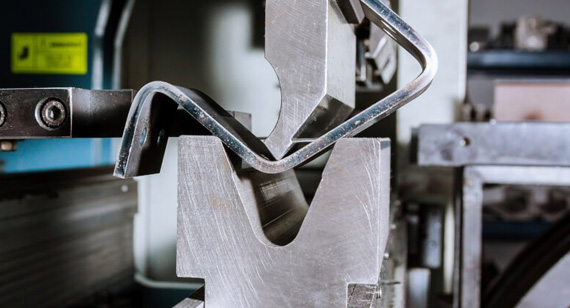
Coining
Coining is a specialized stamping process that uses high-pressure stamping to form intricate features, such as logos, text, or patterns, on a part's surface. Coining is typically used for parts that require fine detail or very precise surface features. Unlike traditional stamping, coining applies pressure over a larger area to achieve a uniform, smooth finish. It is ideal for applications in electronics, jewelry, and branding. In metal stamping CNC machining, coining can be combined with other operations to enhance the quality and precision of the part, resulting in a superior final product.
Piercing
Piercing is similar to punching, but it refers specifically to the process of creating holes or openings in the metal by applying a punch tool to the material. Piercing is often used to create intricate shapes or to remove material from the center of the part. It is commonly used in metal stamping CNC machining to create holes that are part of more complex designs. Piercing is frequently combined with other stamping operations like blanking or punching to achieve more complex geometries required by industries like automotive and aerospace.
Bending/Embossing
Bending/embossing combines both bending and embossing processes to create raised or textured features on the surface of a part. Bending is used to shape the material, while embossing adds a three-dimensional feature, such as a logo or design element, to the surface. This combination of operations is particularly useful in applications where both structural integrity and aesthetic features are needed. CNC machining can enhance the precision of bending and embossing, ensuring that the features are aligned and the part meets the necessary design requirements.
Metal stamping plays a vital role in various industries, producing parts that are essential for the function, performance, and safety of products. The versatility and precision of metal stamping CNC machining make it an ideal solution for applications in industries ranging from automotive to aerospace, medical devices, and beyond. With the ability to produce high-quality, consistent parts at high speeds and low costs, metal stamping offers a broad range of applications across different sectors. This section will explore some of the most prominent applications of metal stamping and how it contributes to the manufacturing of essential components.
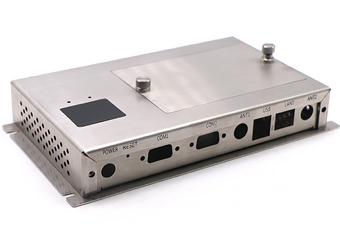
Automotive Metal Stamping
Automotive metal stamping is one of the largest and most important sectors for metal stamping. The automotive industry relies on metal stamping to produce a wide range of components, from body panels to brackets, frame parts, and structural components. CNC machining services are often used to ensure that the stamped parts meet strict tolerances required for performance and safety. With the need for mass production, automotive manufacturers turn to metal stamping to reduce costs, improve efficiency, and maintain high levels of consistency in their parts. Parts such as engine components, door panels, exhaust systems, and suspension components are all commonly made using metal stamping processes.
Aerospace Metal Stamping
Aerospace metal stamping involves creating parts for aircraft, spacecraft, and defense systems. Given the critical nature of aerospace components, stamping operations in this sector require extreme precision and tight tolerances. The materials used for aerospace parts, such as aluminum, titanium, and stainless steel, need to be stamped to exact specifications to ensure structural integrity and safety. Aerospace applications include stamped parts for wings, fuselage, airframes, brackets, and other critical components. The use of CNC machining in the stamping process ensures that parts meet aerospace industry standards for performance and safety.
Electronic Metal Stamping
In the electronics industry, metal stamping is used to create a variety of parts such as connectors, terminals, housings, and other components that are crucial for electrical systems. The need for highly precise and small-scale parts drives the demand for metal stamping, and CNC machining services provide the accuracy necessary for the delicate components found in electronics. Metal stamping CNC machining parts can produce intricate designs, ensuring that electrical devices function efficiently and safely. Whether it’s for mobile phones, computer components, or consumer electronics, metal stamping delivers high-quality, cost-effective solutions.
Medical Metal Stamping
Medical metal stamping is used to produce components that are critical to the functioning of medical devices and equipment. The medical industry demands components that are reliable, precise, and safe for patient use. CNC machining ensures that metal stamping CNC machining parts are created with the highest accuracy, whether for surgical instruments, implants, or diagnostic devices. Materials such as stainless steel, titanium, and biocompatible alloys are commonly used in medical stamping applications. Medical metal stamping must adhere to strict regulatory standards and quality controls to ensure patient safety and effective performance.
Construction Metal Stamping
The construction industry benefits from metal stamping through the production of various parts used in buildings, machinery, and infrastructure. Common applications include stamped metal components for doors, windows, structural reinforcements, brackets, and fittings. The ability to produce durable, cost-effective parts that withstand harsh conditions is a key advantage of metal stamping in construction. With CNC machining services, construction parts can be fabricated to meet precise specifications, ensuring that each component fits seamlessly into larger systems or structures.
At VMT, we specialize in providing custom metal stamping parts that are tailored to meet the specific needs of your business. Our team of experienced engineers works closely with you to understand your project requirements, whether it’s for the automotive, aerospace, medical, or construction industries. We leverage state-of-the-art CNC machining services and advanced technology to ensure precision, accuracy, and high-quality production.
With our extensive expertise in metal stamping CNC machining, we are capable of producing parts in a wide range of materials, including steel, stainless steel, aluminum, and more. Our CNC machining factories use top-tier equipment to create parts with tight tolerances, making sure they fit seamlessly into your assembly lines or final products. Whether you need high-volume production or low-volume custom parts, VMT is committed to delivering durable, reliable, and cost-effective solutions for your specific needs.
Our custom metal stamping parts are designed for performance and durability. We offer a wide range of services, from progressive die stamping and deep drawing to punching, bending, and embossing, ensuring that your parts are produced with the highest level of quality and consistency. VMT’s comprehensive approach to metal stamping ensures that every part is crafted to meet the exact specifications of your project, providing the precision and reliability that you can depend on.
Whether you need simple stamped parts or intricate, multi-step components, we have the expertise and capabilities to bring your vision to life. At VMT, we are dedicated to providing custom metal stamping CNC machining parts that not only meet but exceed your expectations, helping you maintain high standards in your products.

In conclusion, metal stamping is a crucial process in modern manufacturing, providing a versatile, cost-effective solution for producing a wide range of high-quality metal parts. Whether you're working with steel, aluminum, or other metals, metal stamping offers exceptional precision, durability, and speed in production. From simple blanking and punching to more complex processes like deep drawing and hydraulic forming, metal stamping can handle various design requirements with ease.
At VMT, we take pride in offering custom metal stamping parts that meet the specific needs of our clients across various industries, including automotive, aerospace, medical, and more. Our advanced CNC machining services and state-of-the-art equipment ensure that every stamped part adheres to the highest standards of quality and accuracy. By working closely with clients, we provide solutions that are not only cost-effective but also efficient, helping businesses maintain high production rates with tight tolerances.
As you explore the possibilities of metal stamping, whether for high-volume or custom short-run production, VMT is here to provide the expertise and services you need. Our commitment to innovation, quality, and customer satisfaction ensures that you receive the best solutions for your metal stamping requirements, no matter the complexity.
If you’re looking for reliable metal stamping CNC machining parts or need support in any phase of the metal stamping process, VMT is the partner you can trust. Reach out to us today and let’s create the perfect stamped solutions for your business needs.
1. Can you stamp metal at home?
While it’s possible to stamp metal at home with the right tools, the process is generally more suited to industrial settings. DIY enthusiasts can use hand-held tools like hammers and stamps for smaller projects, but for precise, high-quality results, professional metal stamping machines are recommended.
2. What are the four types of metal stamping?
The four primary types of metal stamping are:
3. How to stamp metal by hand?
To stamp metal by hand, you need basic tools like a hammer, metal stamp, and anvil. Position the metal on a flat surface, then apply pressure with the hammer on the stamp to imprint the design. This method is limited to smaller, simpler designs.
4. What are the 7 steps of the stamping method?
The typical steps in the metal stamping process are:
5. What is the easiest metal to stamp?
The easiest metals to stamp are generally aluminum and copper, as they are softer and easier to manipulate compared to harder metals like stainless steel or titanium. These softer metals require less force to stamp, making the process quicker and more efficient.
6. What is the difference between engraving metal and stamping metal?
Engraving involves cutting or etching into the surface of the metal to create designs, while stamping involves using pressure to form shapes, create holes, or imprint designs into metal. Engraving is often more detailed, while stamping is typically used for shaping and forming.
7. What machines are used for stamping?
Common machines used for metal stamping include mechanical presses, hydraulic presses, and servo presses. These machines apply high pressure to shape the metal, depending on the type of stamping required.
8. Is metal stamping difficult?
Metal stamping can be complex, depending on the material, design, and precision required. However, with the right equipment, experience, and process optimization, it can be made relatively straightforward, especially for high-volume production runs.
9. What are the alternatives to metal stamping?
Alternatives to metal stamping include laser cutting, waterjet cutting, die cutting, and 3D printing. Each method has its advantages and disadvantages depending on factors such as the material, part complexity, and production volume.
10. Can I stamp stainless steel?
Yes, you can stamp stainless steel, although it requires more force and specialized tools due to the material’s hardness. Stainless steel is commonly stamped for applications that require durability and resistance to corrosion.
11. How can I make my own stamp at home?
To make your own stamp at home, you’ll need a suitable stamping die, typically made from a soft metal or plastic for smaller projects. You can carve or etch the design into the die using specialized tools. However, for metal stamping on tougher materials, industrial machinery is necessary.
12. What are the four types of metal stamping?
As previously mentioned, the four main types of metal stamping are:
13. Which is better, etching or engraving?
Engraving is better for producing deeper, more detailed designs on metal, while etching is ideal for surface-level designs. The choice depends on the project requirements, including depth, precision, and material type.
14. What metal is suitable for stamping?
Common metals used for stamping include steel, aluminum, brass, copper, and stainless steel. The material should be malleable enough to withstand the stamping process without cracking or breaking.
15. How thick can you stamp metal?
The thickness of the metal that can be stamped depends on the stamping equipment and process used. Typically, metals ranging from 0.1 mm to 10 mm thick can be stamped, but thicker materials may require more specialized techniques or equipment.
This FAQ section provides a clear overview of metal stamping and common inquiries, helping you gain a deeper understanding of the process. If you need further assistance, don’t hesitate to contact VMT for expert metal stamping CNC machining parts solutions!
